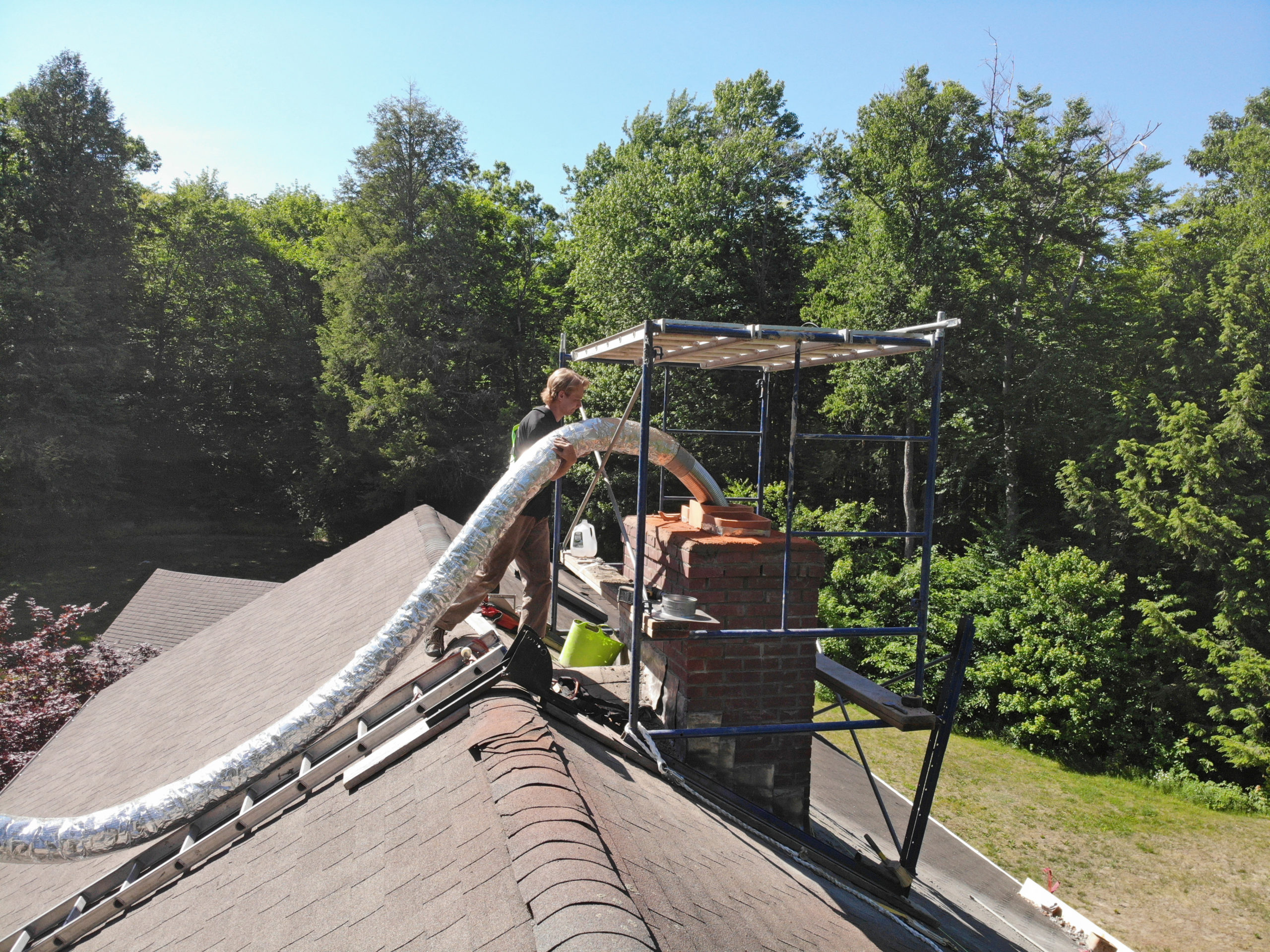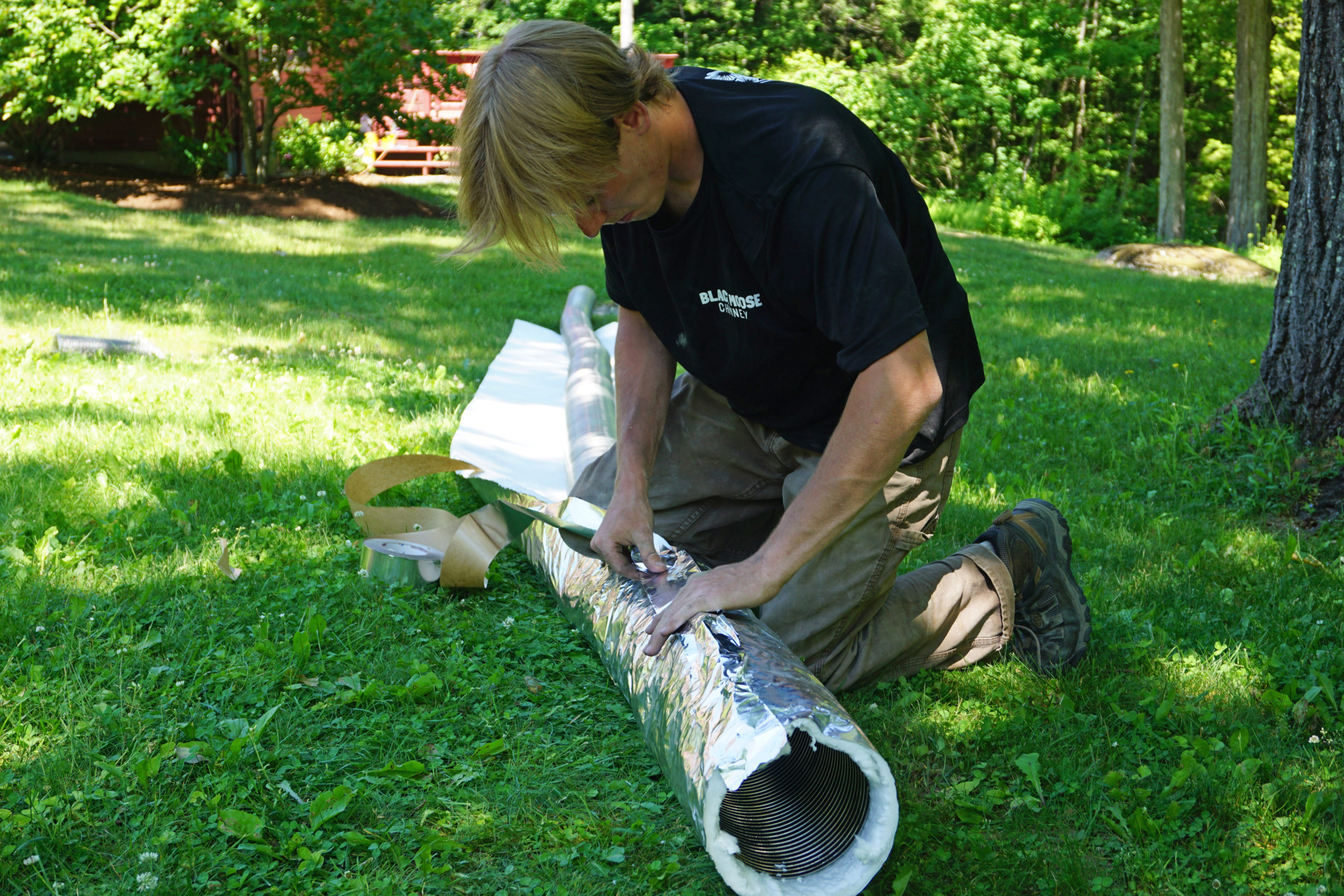When spring and summer arrives, many homeowners take advantage of the warmer weather for their spring-cleaning chores and working on home improvement projects. With the fireplace taking center stage for much of the winter, the warmer months are the perfect time of year to replace cracked or worn chimney liners.
 What is a Chimney Liner and Why You Need It?
What is a Chimney Liner and Why You Need It?
A chimney or flue liner is a clay, ceramic, or metal conduit installed in the chimney that helps shield the masonry from the high heat and flames in the fireplace. In addition to helping prevent heat transfer to combustible materials, the liner also protects the interior masonry walls from the damaging effects of the corrosive combustion gases. It also helps direct the exhaust up the flue where its expelled out of the home.
Most homes today with a chimney have a flue liner since building codes now require them. However, homes built in the early 1900s and earlier were commonly built without a liner.
Some of those homes today are still without the protection of a chimney liner. Many older homes have since upgraded their fireplace or heating stove but didn’t update their flue. Since flue size is dependent on the type of heating appliance, an incorrectly sized flue is a safety issue.
When a Chimney Liners Needs Repair or Replacement
A well-maintained chimney liner can last for 15 to 20 years or more. Determining whether the liner needs repair or replacement requires a flue inspection, preferably with a video scan. The majority of chimney liners are clay tiles which can crack or split in very high temperatures. When the chimney is not cleaned regularly, creosote builds-up on the surface. The high heat in the fireplace can ignite the creosote leading to a chimney fire. The fire can cause the tiles to burst increasing the risk of the fire spreading throughout the house. Also, the combination of corrosive gases and moisture can cause the liner to deteriorate, increasing the risk of exposure to dangerous fumes.
 Stainless-Steel Chimney Liner
Stainless-Steel Chimney Liner
When its time to upgrade the flue or reline the chimney, homeowners should seriously consider a UL-listed stainless-steel chimney liner. A stainless-steel liner is a long tube that is installed in the chimney. You may have even noticed it being installed in a nearby home. Its simple installation process makes it more affordable than other types of liners, like clay tile and cement. Also, stainless steel liners have many other benefits:
Durability –
Stainless steel is extremely tough and durable that will provide many years of protection. It is also resistant to moisture, rust, and pests.
Heating Efficiency –
A steel liner can be insulated to increase heating efficiency. It will help minimize downdrafts increasing the heating efficiency of the fireplace or heating stove while also reducing creosote. An insulated steel liner will also keep your home warmer for a more extended period after the fire is out.
Easier Maintenance –
The smooth circular surface of a stainless-steel liner makes it easier to clean and maintain. There are no rigid surfaces that can trap soot, creosote, and other dirt that make other types of liners harder to clean.


